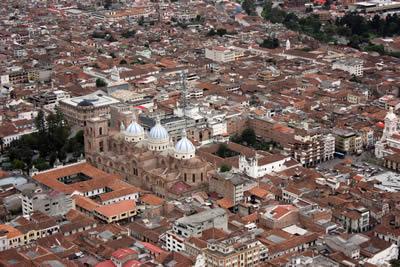News
'In a world which is more interconnected than ever, in which financial and trade flows have been liberalized, the mobility of people runs up against severe barriers which restrict it,' says the Economic Commission for Latin America and the Caribbean (ECLAC) in its new paper, Globalization and Development, being presented this week to member governments in Brasilia, during its 29th Session.
'The difficulties placed in the way of migration ... reveal the asymmetrical aspects of a form of globalization which includes some individuals, population groups, countries and regions but at the same time excludes others,' the report states, in a chapter contrasting the enormous mobility of capital to restrictions on the international movement of labour in this third phase of the globalization process.
ECLAC suggests that unequal development levels are decisive factors in these movements. The Commission believes that international migration is 'a multi-faceted phenomenon' that requires the adoption of multilateral measures based on cooperation between States to bring an end to single countries applying unilateral policies. ECLAC underscores the need to join forces in the struggle against 'trafficking in immigrants, which is a source of illicit profit for organizations that operate on an international scale.' It proposes the inclusion of migration on the regional and international agendas, to deal with issues of the governance of migration, links with emigrants, and measures to prevent some of the risks associated with it.
The study points out that at the start of this new century, immigration legislation is much more restrictive than in the past and focuses increasingly on achieving greater control of illegal immigration. Free movement of individuals is limited to certain regions, mainly among the countries of the OECD (Organization for Economic Cooperation and Development), and is most prevalent among skilled workers, producing a 'brain drain' from developing countries.
Nonetheless, 'the individuals most likely to emigrate are relatively low-skilled workers wishing to move from South to North.' In the past decade, irregular immigration into the OECD countries rose significantly, leading them to reinforce controls at borders, and on residency and employment of foreigners.
Today, one of every ten of the 150 million migrants worldwide was born in a Latin American or Caribbean country. This figure doesn't include the fraction that does so (and works) in irregular or undocumented conditions. By the year 2000, almost 20 million Latin Americans and Caribbean's lived outside their own countries. Seven of every 10 migrants reside, legally or otherwise, in the United States. Of the rest, half live in some other country in Latin American and the Caribbean, and the other half live in other regions of the world. Canada (with over one-half million immigrants) and countries such as Spain, Italy, the Netherlands, the United Kingdom, Australia and Japan are the main receiving countries.
Most recently, migration within the region has fallen, associated in part with the decline in the attractiveness of the main destination countries (Argentina and Venezuela), which has not been offset by an increase in new poles of attraction (Costa Rica, Chile, the Dominican Republic).
According to the US census in 2000, the population that identifies itself as 'Latino' or 'Hispanic' has reached 35.3 million people, including both immigrants and the native born, (13%), making this the largest ethnic minority in the country. This is perceived as a very significant social phenomenon in the US and an issue of the first order in its relations with the region's countries.
Immigrants from this region to the United States form a heterogeneous group. Mexicans are the largest group (over seven million in 1997). No other contingent from the Caribbean (mainly Cubans and Dominicans) or Central America (especially Salvadorians) has reached over one million people. Most are men with low skill levels, but higher than average educational levels compared to their population of origin.
Among South American and Caribbean immigrants, people with medium to high skills levels are the most common. In 1990, some 300,000 Latin American and Caribbean tradespeople, about 3% of those available in the region, resided in countries other than where they were born. More than two-thirds of them lived in the United States.
An economic phenomenon associated with migration, and one that is increasingly important, is the 'remittance' of funds. It is estimated that the total amount of monetary transfers from emigrants to their countries of origin reached over US$17 billion in 2000. Mexico is the main receiving country in the region, with almost US$7 billion. This source provides more income than that generated by most export sectors, although its impact on the national economy is relatively low (1.1% of GDP). Its impact is much greater in El Salvador, Nicaragua, the Dominican Republic, Ecuador and Jamaica (where it accounts for from 8% to 14% of GDP). For El Salvador this amounts to 48% of exports, by value. Amounts sent to Brazil, Colombia and Peru are also high, although their impact on GDP is lower (0.2%, 1.3% and 1.3%, respectively).
ECLAC suggests that there is a great deal of research to be done on the issue of productive use of remittances, and proposes several ideas in this sense.
Although the displacement of people in recent decades is significant, the study shows that this is not the period in which the most people have migrated in modern times. From 1870 to 1920, a period also known as the 'mass migration era', the United States received 26 million people, mostly from Europe, which amounted to over 10% of its population. The current migration into the United States consists primarily of Latin Americans and Caribbeans (46%) and Asians (34%). In the case of the European Union, internal migration accounts for two-thirds of the total (66.2%). Other important regions of origin are Africa (16.2%) and Asia (10.6%). Almost three-quarters of migration into Japan comes from Asia (53.3%), Latin America (10.2%) and the United States (8.8%).

